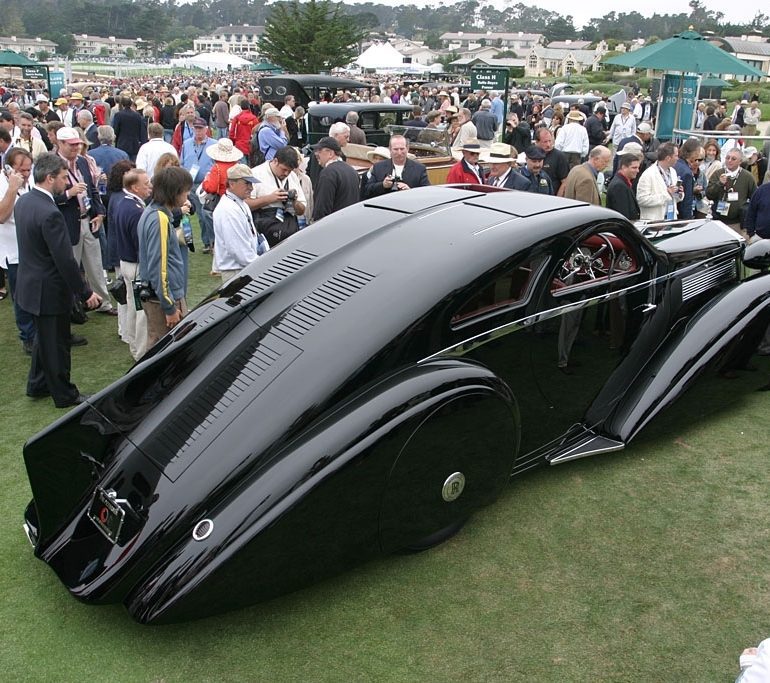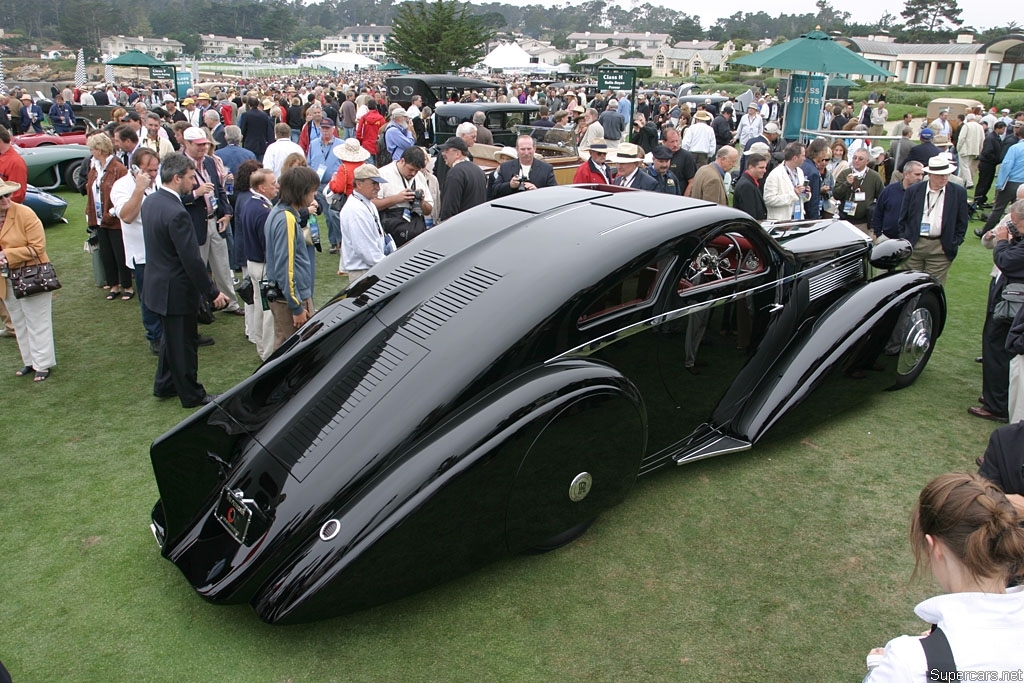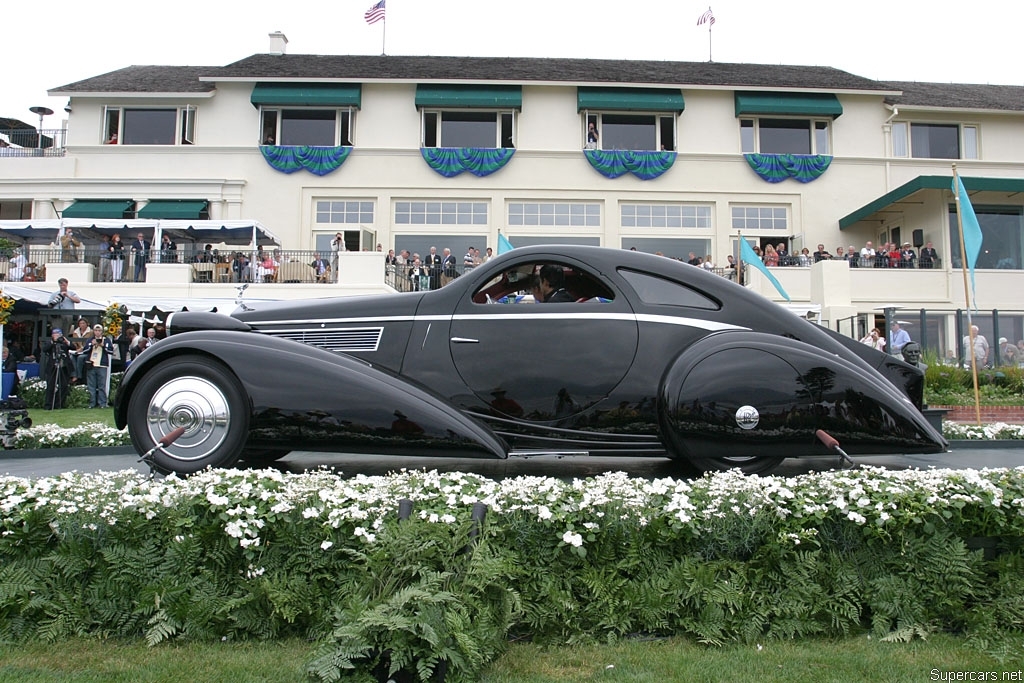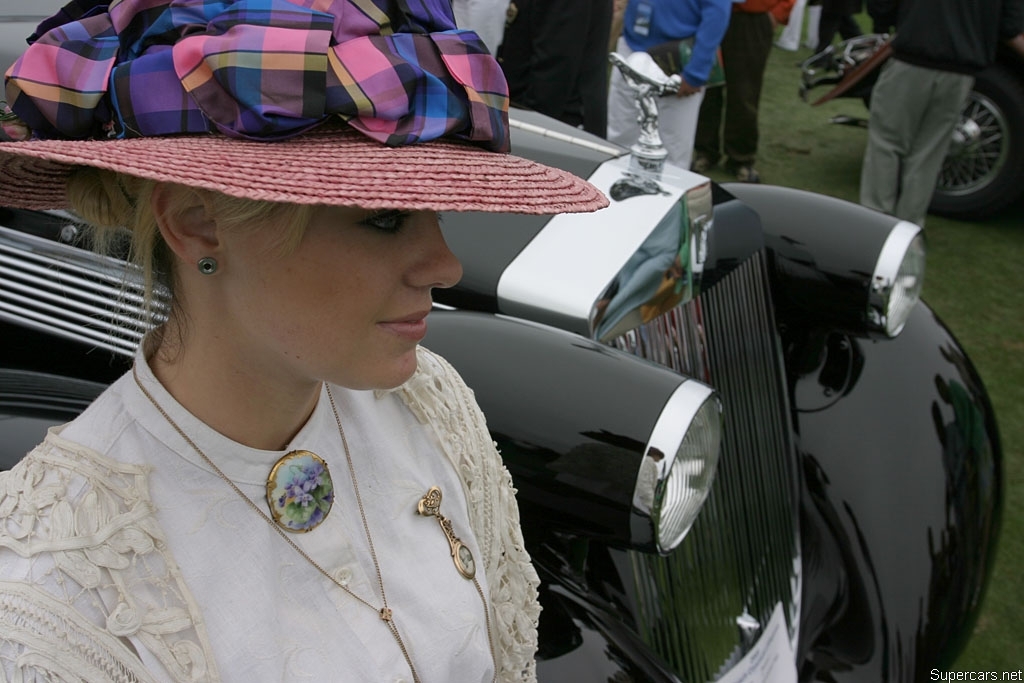1935 Rolls-Royce Phantom I Jonckheere Coupe
There are few cars that are as dramatic as the Jonckheere Coupe. Its imposing length, menacing curves and oversize grill make most other pre-war cars look boring. And it certainly makes most other Rolls-Royces look staid by comparison. Furthermore, the benchmarks of size, stature, cost and risk will probably never be reached again. If we had to pick the most memorable Rolls-Royce, this would have to be it.
Such a striking car would certainly have to have an eccentric owner and certainly be born in the Art Deco movement of the 1930s. The Jonckheere Coupe was very much a part of this movement with its stylish modernism and mathematical geometric shapes which were popular at the time. This is especially true of the car’s circular doors which give it a proper nickname: “The Round Door Rolls”.
The origin’s of the Jonckheere Coupe stretch around the world, but start in Great Britain at the Rolls-Royce factory. As early as 1907, Rolls and Henry Royce were setting high standards of luxury, reliability and craftsmanship in their cars. This trend never died and the same company is still making cars true to the company’s origins.
This design philosophy caught the attention of the Raja of Nanpara. His Great Nanpara Estate had already contained a polished aluminum 40/50HP Silver Ghost when he ordered Rolls-Royce’s latest Phantom. Upon arrival, the owner probably didn’t like the conventional Hooper cabriolet bodywork because it was eventually scrapped and replaced with what you see here.
Almost 10 years old, this rolling chassis was then shipped to Belgium to the shop of Henri Jonckheere and his son Joseph Jonckheere. They were well known throughout Europe for making bodies on both cars and busses. The later of which is still in production today as VDL Jonckheere. The commissioning owner of the car is uncertain due to war damage at the factory, but the design is not. The Jonckheeres created an extravagant body which has just as much impact 75 years after its constuction as it did in 1935. The car was finished in time for the Concours on the French Riviera where it won the ‘Prix de Cannes’ award.
The doors, which are actually oval, required two half-moon pieces of glass that closed towards each other within a complex winding mechanism. Other details included sliding left and right sun vents, a sloping fastback profile and an enormous rear tail fin. It was also one of the few Phantom Is which featured a modified front grill.
Eventually the car made its way stateside and was saved by Max Obie before being scrapped. He restored the car in a brilliant hue of metallic gold and refurbished details like the silk headliner and seats that folded into beds. From here, the car was shown as a sideshow at fairs where anyone with a dollar well spent could have viewed the Coupe. After its freakshow days were numbered, the golden behemoth was stored away for long time.
In the 1980s, the car was resurrected and sold at auction. The description incorrectly listed it as “the 1954 World Motorsport winner in NY” and “Built for Prince of Wales”. With just 5000 miles on the odometer, it was picked up by a Japanese collector for $1,500,000 USD who retained the car for 20 years.
Eventually the car made its back to America and in the hands of the California-based Peterson Museum. Arriving in pieces, they send the remains to Tired Iron Works in California to piece together the entire car. Details were discovered such as an extended chassis. The biggest challenge was to finish the body and its squared-off louvers.
Peterson debuted the stunning Rolls at the 2005 Pebble Beach Concours where its questionable providence got in the way of its unquestionable elegance. If the Pebble Beach judges would have understood that nothing is born perfect, this car likely would have taken Best in Class or maybe even Best in Show. As a consolidation prize, it did win the Lucius Beebe Trophy for the finest Rolls-Royce and became a favorite of many at the show. It has since been seen at various other Concours events such as Meadowbrook and Ameila Island.
Bibliograhy and Further Reading
Walsh, Mick. “Round Door Rolls-Royce”. Classic & Sports Car. April 2006.
In Detail
| submitted by | Richard Owen |
| engine | Cast Iron Straight-6 |
| position | Front Longitudinal |
| aspiration | Natural |
| valvetrain | OHV, 2 Valves per Cyl |
| fuel feed | Rolls Royce Carburetor |
| displacement | 7668 cc / 467.9 in³ |
| power | 80.5 kw / 108 bhp @ 2300 rpm |
| specific output | 14.08 bhp per litre |
| body / frame | Steel Frame |
| front brakes | Drums |
| f brake size | mm / in |
| rear brakes | Drums |
| r brake size | mm / in |
| f suspension | Solid Axle w/Semi-Elliptic Leaf Springs, Friction Dampers |
| r suspension | Live Axle w/Springs, Friction Dampers |
| wheelbase | 3283 mm / 129.3 in |
| front track | 1461 mm / 57.5 in |
| rear track | 1461 mm / 57.5 in |
| transmission | 4-Speed Manual |
| gear ratios | :1 |







